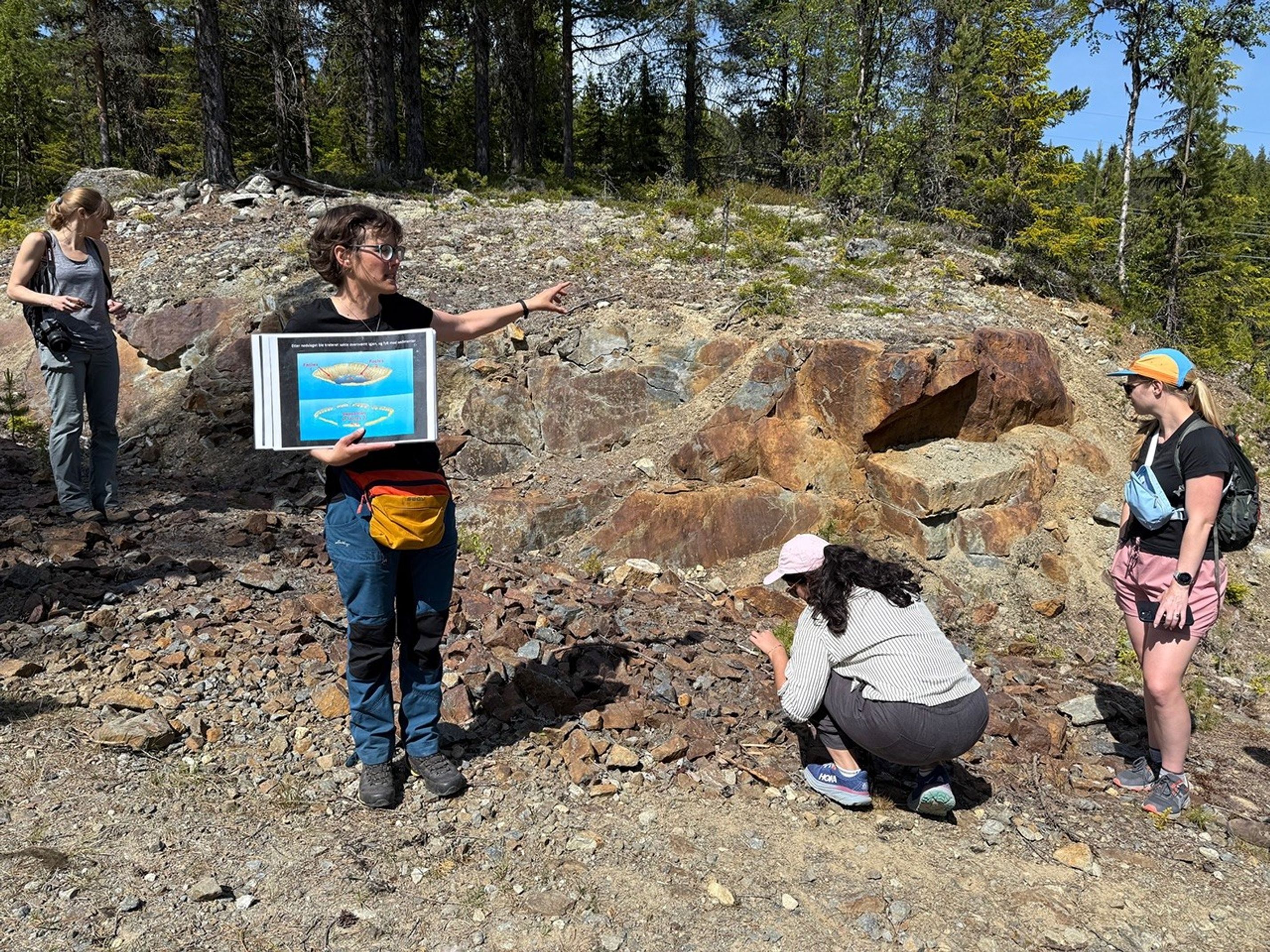Curiosity had another nice ~51 m drive over the weekend, making good progress towards the next intended drill location and taking in the view along the way.
Curiosity had another nice ~51 m drive over the weekend, making good progress towards the next intended drill location and taking in the view along the way. It’s a good reminder to check the rearview mirror (or the view over the back right side of the rover, as seen in the above Navcam image) to remind ourselves just how far we’ve come.
Today’s two-sol plan follows a familiar pattern, with APXS observations on a brushed rock target to monitor the chemistry along the traverse, followed by remote sensing and another ~50 m drive. The plan starts with several Mastcam observations to document some interesting polygonal fractures, a vertical rock face named “Audrix” to assess stratification and vein geometry, and bedding exposed at Rafael Navarro mountain, a nearby peak named in honor of a former team member. Then Curiosity will use the DRT to brush the rock target “Ribagnac,” followed by two short APXS integrations to assess its chemistry. Afterwards, Mastcam will assess the same target using all of the camera filters. Following the Mastcam observation, ChemCam will assess the bedrock target “Hautefort.” Then Curiosity will continue her trek to the southwest, taking post-drive imaging to prepare for a similar plan on Wednesday. The second sol is devoted to environmental monitoring, including a Navcam search for dust devils, and Navcam and Mastcam observations of the dust content in the atmosphere. The plan also includes a photometry experiment to better understand the light-scattering behavior of these rocks. I hope Curiosity is enjoying her road trip – we’re all looking forward to the next pit stop for drilling!
Written by Lauren Edgar, Planetary Geologist at USGS Astrogeology Science Center































